Federal Student Loans vs. Private Student Loans
Confused about the difference between federal student loans and private loans? Not sure which ones to choose to pay for college?
If you need to borrow money to pay for school, it’s best to start with federal student loans, such Direct Subsidized Loans and Direct Unsubsidized Loans, Direct PLUS Loans, and Federal Perkins Loans.
Once you have maximized your federal student loan borrowing, exploring private student loans may be a good option, as long as you work with a reputable lender.
Below, check out the difference between the two types of student loans, their benefits, and their limitations.
Federal Student Loans
- Funded by the federal government
- Do not need to be repaid until you graduate, leave school, or change your enrollment status to less than half-time
- Fixed, often lower interest rates than private loans (view current interest rates here)
- Subject to limits based on year in school and dependency status (no more than $31,000 over the course of undergraduate study)
- May be subsidized so the government pays the interest on the loan while you’re in school
- No co-signer or credit check needed in most cases
- Include a choice of repayment plans (Standard 10-year plan, extended repayment, graduated repayment, income-based repayment, or income-contingent repayment)
- Eligible for deferment (due to re-enrollment in school, military service, economic hardship, or unemployment)
- Eligible for forbearance (in case of financial difficulty)
- Available for Direct Consolidation (combining several loans into one loan)
- May be eligible for loan forgiveness programs if you work in public service
Private Student Loans
- Nonfederal loans made by a lender such as a bank, credit union, state agency, or a school
- May require repayment while in school
- Unsubsidized–you’ll pay the interest on the loan, even while you’re in school
- Higher or variable interest rates
- Co-signer or credit check may be needed to secure loan
- Do not usually come with borrower protections
- Do not make borrowers eligible for government repayment plans like Income-Based Repayment and Income-Contingent Repayment
- Deferment and forbearance may not be available
- Loan forgiveness unlikely
Clearly, there are benefits to choosing federal loans over private ones. However, for many students, the maximum amounts on federal loans are not enough to cover their full cost of attendance, so some choose to explore private loan options as well.
Loan comparison sites like Student Loan Network or FinAid.org can help you figure out the best way to finance your college education. You may even be able to find some lenders offering loans with fixed rates comparable to Federal PLUS loans.
The best advice is to carefully consider all financial aid and student loan options, shop around for the best rates, and make the right decision based on your situation.
If you’re struggling to figure out how to pay for college, we can help you weigh your options. Check out our Financial Aid Counseling service or give us a call at 1-888-234-3907 for a free consultation.
Financial Aid, Student Loans & Repayment
federal student loans, interest rates, private loans, repayment, student loans
